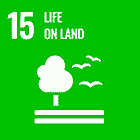Let’s keep in touch!
The latest news of the Metis Fund, delivered straight to your inbox!
Au Mozambique, les villageois de la réserve de Niassa modèlent une sculpture d’éléphant à partir d’anciens pièges de braconnage pour faire évoluer les imaginaires populaires sur la faune sauvage.



Yao Elephant
In northern Mozambique, the Niassa National Reserve, the country’s largest protected area covering 42,000 km², is one of the last remaining wilderness areas on the continent. However, between 2011 and 2017, the reserve faced severe poaching issues due to the rising demand for ivory. In 2017 alone, 129 elephants were killed in Niassa, and in just five years, the population declined from 12,000 to 3,500 individuals.
For the 60,000 people living in the dozens of villages within the reserve, job opportunities are scarce. The ban on hunting and the damage to crops caused by wildlife sometimes lead to conflicts between humans and animals. Illegal logging, mining activities, and climate change also pose significant threats to the local fauna.
Since 2018, a coordinated anti-poaching strategy has been implemented, and since then, no elephants have been killed.
elephants were killed in the Niassa Reserve in 2017
Between 2013 and 2018, the elephant population in Niassa dropped from 12,000 to 3,500
people saw the sculpture across the country
To celebrate five years without poaching, reshape public perception of wildlife and promote employment, biologist Paula Ferro—already behind the Niassa women’s collective Yao Crochet—and Derek Littelton, a concession manager within the reserve and a sculptor, envisioned an ambitious project. Together, they planned the collective creation of a life-sized elephant sculpture, using old poaching traps as the core structure.
After creating a two-meter-high prototype, young French sculptor Jules Pennel led a co-creation project with five members of the Yao Crochet collective—Josina, Matola, Norte, Cecilia, and Roques—training them in metalwork. Together, they built the full-scale sculpture, with its “skin” made of patchworks of wool crocheted by the women of Yao Crochet.
The prototype, named “Papa Manhure,” traveled between Niassa and Maputo and was seen by over 5,000 people. In July 2023, Papa Manhure was presented at an international environmental congress in the capital. Struck by the artwork, President Filipe Nyusi encouraged further national efforts for biodiversity conservation.